Britten, Kazik from the Washington Metropolitan Philharmonic
Tuesday April 3, 2007
______________________________________________________________

Benjamin BrittenThe Washington Post 4/03/07: The British composer Benjamin Britten was not yet 20 when he sketched his Double Concerto in B Minor for violin, viola and orchestra -- then shelved the thing without bothering to finish it. Britten's neglect is hard to fathom. This 1932 work (which was realized from a sketch after the composer's death and premiered in 1987) is a stunning, fully mature composition, as the Washington Metropolitan Philharmonic showed on Sunday at the Rachel M. Schlesinger Concert Hall.
Violist Marc Ramirez and violinist Olivia Hajioff (who perform together under the slightly squirmy moniker "marcolivia") turned in a vivid and satisfying account of the work; the two are almost palpably in sync both in tone and sensibility, and they took obvious pleasure in exploring the work's considerable expressive depths. Kudos to the philharmonic's music director, Ulysses S. James -- who conducted with precision and vitality -- for putting this unjustly neglected work on the program.
The program also featured the world premiere of James Kazik's "Poem for Orchestra," a short but appealing work with an introspective, often dreamlike feel to it. While rather conventional in its language and restrained in its expressive range, it was elegantly knitted together and demonstrated Kazik's command of orchestral textures; there were several moments (such as the clarion trumpet rising out of a melancholy shimmer of strings) that were quite magical.
The evening closed with a concert version, much abridged, of Jacques Offenbach's lyric opera "Tales of Hoffmann." Mark Whitmire led the NOVA Community Chorus in a tour of the opera's high points, which -- despite some truly painful French and the sometimes-casual coordination between orchestra and chorus -- proved perfectly enjoyable.
Alizadeh at Lisner: Dissolving Borders
Saturday March 31, 2007
_____________________________________________________________
 The Washington Post 3/31/07: With relations between Tehran and Washington growing ever more fractious, the appearance of Iranian composer/virtuoso Hossein Alizadeh at Lisner Auditorium on Thursday couldn't have come at a better time. Sitting almost motionless on a cushion and wielding only a delicate, long-necked lute called a setar, Alizadeh summoned up a musical world of profound humanity, tenderness and spiritual grace -- a kind of cultural diplomacy the planet could use more of.
The Washington Post 3/31/07: With relations between Tehran and Washington growing ever more fractious, the appearance of Iranian composer/virtuoso Hossein Alizadeh at Lisner Auditorium on Thursday couldn't have come at a better time. Sitting almost motionless on a cushion and wielding only a delicate, long-necked lute called a setar, Alizadeh summoned up a musical world of profound humanity, tenderness and spiritual grace -- a kind of cultural diplomacy the planet could use more of.
Alizadeh has been a prime force in modernizing Iranian music, but his roots in the classical tradition remain deep, as he showed in the riveting half-hour improvisation that opened the program. Building on traditional structures and modal motifs, Alizadeh (accompanied by Pejman Hadadi on the tombak drum) unleashed a river of music that flowed with utter spontaneity. Sometimes meditative and still, sometimes building to a transporting storm, it always rang with tremendous imagination and a deep, satisfying logic.
 All six members of Alizadeh's Hamavayan Ensemble joined him after intermission for "Soroud-e Gol" ("Ode to Flowers"). It's a suite of 10 songs by Alizadeh, each unique, colorful and steeped in the rhythms of poetry -- a rich garden of new Iranian music. The fine singer Afsaneh Rasaei handled the densely ornamented melodies effortlessly, and Alizadeh himself played the lute-like shourangiz (similar to the setar but larger, with a richer tone). His son Saba turned in some remarkable solos on the kamancheh, an upright bowed fiddle with an almost human tone, while his other son, Nima, played the traditional robab lute with sensitivity and feeling.
All six members of Alizadeh's Hamavayan Ensemble joined him after intermission for "Soroud-e Gol" ("Ode to Flowers"). It's a suite of 10 songs by Alizadeh, each unique, colorful and steeped in the rhythms of poetry -- a rich garden of new Iranian music. The fine singer Afsaneh Rasaei handled the densely ornamented melodies effortlessly, and Alizadeh himself played the lute-like shourangiz (similar to the setar but larger, with a richer tone). His son Saba turned in some remarkable solos on the kamancheh, an upright bowed fiddle with an almost human tone, while his other son, Nima, played the traditional robab lute with sensitivity and feeling.
This weekend in Baltimore: "Music of Japan Today 2007"
Thursday March 29, 2007
___________________________________________________________________________
The University of Maryland is hosting a festival of contemporary Japanese music this weekend at its Baltimore County campus, and there's music in abundance: three concerts on Friday (including a shakuhachi recital by grand master Retsuzan Tanabe) another on Saturday night, and a concluding concert at the Freer Gallery on Sunday afternoon. Composers Hiroyuki Itoh, Hiroyuki Yamamoto, and Shirotomo Aizawa will be on hand to discuss their music.
If that doesn't sate your appetite, check out the festival's nearly two dozen lectures -- everything from the head-scratchingly arcane (“Structural Integration of Television Phenomena in Joji Yuasa's Observations on Weather Forecasts”) to the more user-friendly “Music in the Bathtub: Reading Takemitsu's Music Through Western Criticism" by Takemitsu expert Peter Burt.
Mariza: A Wild Night of Fado at the KenCen
Monday, March 26, 2007
____________________________________________________________
 The Washington Post 3/26/07: The traditional Portuguese music known as fado is not for the timid. Passionate and uninhibited, it revels in drama, diving recklessly into the dark pathos of the human heart. In the hands of its best interpreters, fado's power can be primal and almost overwhelming -- and it's starting to catch on with audiences around the world.
The Washington Post 3/26/07: The traditional Portuguese music known as fado is not for the timid. Passionate and uninhibited, it revels in drama, diving recklessly into the dark pathos of the human heart. In the hands of its best interpreters, fado's power can be primal and almost overwhelming -- and it's starting to catch on with audiences around the world.
Much of the credit for that goes to Mariza, a 33-year-old fadista whose superb contralto voice and fearless sense of drama have made her a star on the rise. Born in Mozambique and raised in Portugal, she's been reviving and reinventing the traditional fado style, and the results -- as she showed at the Kennedy Center Concert Hall on Friday night -- are nothing short of spectacular.
Backed by a percussionist and a trio of guitars, Mariza sang a mix of newer and more traditional fado. "Cavaleiro Monge" and "Maria Lisboa" were fine-tuned and intricately detailed, her voice sweeping effortlessly from searing cries to whispered confessions. Full of longing, awash in sadness and regret, it was an evening of defiantly emotional music. And when Mariza unleashed the full power of her voice -- as she did in the wrenching "Primavera" -- it was one long, devastating cry from the heart.
The program was originally to include the Mexican singer Eugenia Leon, who had to cancel due to an injury. Unfortunate as that was, Mariza and her accompanying band -- particularly the amazing Luis Guerreiro on the round-bodied Portuguese guitar -- more than made up for the loss, winning multiple ovations from the packed house.
The Post-Classical Ensemble: Cutting to the Roots
By Stephen Brookes • The Washington Post • March 19, 2007
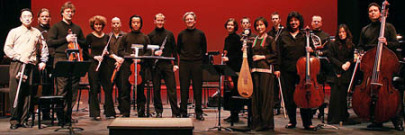 The Post-Classical Ensemble may be the most thought-provoking music group in town. It's certainly one of the most innovative, using its concerts as laboratories for musical thought experiments. Often focusing on a single piece -- or even a single movement from a single piece -- the group probes the work's cultural "back story," pulling away layer after layer of context to expose its innermost core. Their performances can be demanding -- but they're invariably beautiful, and never dull.
The Post-Classical Ensemble may be the most thought-provoking music group in town. It's certainly one of the most innovative, using its concerts as laboratories for musical thought experiments. Often focusing on a single piece -- or even a single movement from a single piece -- the group probes the work's cultural "back story," pulling away layer after layer of context to expose its innermost core. Their performances can be demanding -- but they're invariably beautiful, and never dull.
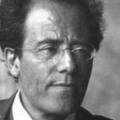
Gustav MahlerThat was the case Friday night at the Clarice Smith Performing Arts Center, when the ensemble focused on the "The Farewell" -- the final movement of Gustav Mahler's song-symphony "Song of the Earth." Based on translations of three 8th-century Chinese poems, the work is redolent of Eastern influences, and the evening opened by going directly to the roots: traditional Chinese music, followed by a reading (in Chinese) of the original poems that inspired the composer.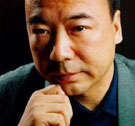
Zhou LongThose same poems were also the basis of the next work on the program, a new "Farewell" by Chinese-American composer Zhou Long. It was a masterly work -- atmospheric, finely wrought music that captured the delicate melancholy of the poems without ever descending into sentimentality. Long speaks a thoroughly modern language and has one of the most striking sonic imaginations of any composer around, but it was the sheer grace of this music that lingered in the ears.
Barely pausing for breath, conductor Angel Gil-Ordóñez led the ensemble into the Mahler -- a chamber version for 13 instruments, reduced from the vast orchestral original. And it was a revelatory performance: Pared down to its essentials, "The Farewell" gained in clarity what it lost in mass, and mezzo Delores Ziegler was able to take an intimate approach that brought out all the elusive beauty of the Chinese poems.
Inti-Illimani at Lisner
March 14, 2007
________________________________________________________________
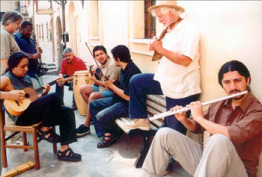 The Washington Post 3/14/07: After four decades of touring, the members of the Chilean octet Inti-Illimani could be excused if they rested on their considerable laurels. Since the 1973 overthrow of Salvador Allende forced the group into political exile, the "Intis" have become Latin America's most prominent folkloristas and an outspoken voice for the continent's oppressed.
The Washington Post 3/14/07: After four decades of touring, the members of the Chilean octet Inti-Illimani could be excused if they rested on their considerable laurels. Since the 1973 overthrow of Salvador Allende forced the group into political exile, the "Intis" have become Latin America's most prominent folkloristas and an outspoken voice for the continent's oppressed.
But as founding member Jorge Coulon told a wildly enthusiastic crowd at Lisner Auditorium on Sunday night, "We must not become prisoners of memory. We don't want to become a museum of ourselves."
The group has taken on five new members over the past decade, and the impact -- musically, at least -- has been dramatic. While still steeped in traditional culture, Inti-Illimani is striking out in new directions, working edgy harmonies and jazzier rhythms into its music -- reinventing itself, more or less, for the 21st century.
But there was still plenty to please purists. An Inti-Illimani concert is a wild ride through Latin music, a whirlwind of Andean folk tunes, tangos from Argentina, Brazilian sambas, and throbbing, sobbing love songs from Mexico. Shifting among 30 different instruments, the players wove an intricate and always-changing tapestry of sound, shifting effortlessly from whispery ballads to intoxicating explosions of flutes and drums, always to mesmerizing effect.
And while there's a definite political flavor to much of the music, it's done with a light touch -- steering clear of diatribe or anything too controversial.
The band mixed up old favorites like "Sambo Lando" with material from the forthcoming album "Pequeno Mundo," including the jazzy, percussive "Rondombe" and a compelling new version of the 1960s song "La Guitarrera Que Toca." Some of the most moving singing of the evening came from multi-instrumentalist Juan Flores on "La Tarde Se Ha Puesto Triste" -- but all the players displayed relentless virtuosity in a concert that was pure exhilaration to the very end.
Taj Mahal and Los Lobos at the State Theater
March 12, 2007
_________________________________________________________
The Washington Post 3/12/07: At first glance, putting Taj Mahal and Los Lobos on tour together may not seem obvious, or even understandable. But when the legendary bluesman and the Tex-Mex rockers from East L.A. teamed up at the State Theater in Falls Church on Friday, they dug into their roots -- and came up with a spectacular show that ranged from Venezuelan folk songs to gut-churning Delta blues.
 Backed by Kester Smith on drums and Bill Rich on bass, Mahal opened the show, delivering classics from "Corinna" to "Going Up to the Country, Paint My Mailbox Blue," with a quick turn at the keyboard for Little Walter's "Blues With a Feeling." It didn't matter that Mahal's been performing a lot of this material for decades -- he's still one of the most satisfying and innovative blues players around.
Backed by Kester Smith on drums and Bill Rich on bass, Mahal opened the show, delivering classics from "Corinna" to "Going Up to the Country, Paint My Mailbox Blue," with a quick turn at the keyboard for Little Walter's "Blues With a Feeling." It didn't matter that Mahal's been performing a lot of this material for decades -- he's still one of the most satisfying and innovative blues players around.
At 64, his voice is supple and strong, and he brought an easy spontaneity to everything he played, channeling a Sybil-like range of personalities for "Fishing Blues" and even spanking his guitar when the mood struck him. And his pleasure in being onstage was infectious -- it took him about three seconds to get the packed house singing along with the sultry "Uh-Huh Blues."
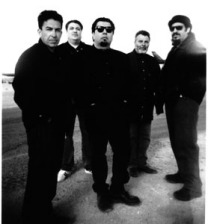
Photo by C.P. McBrideLos Lobos have covered a lot of ground since they were formed in 1973, playing everything from Tejano R&B to refried rockabilly. For their current tour -- called "Acoustic en Vivo" -- they're focusing on their Mexican roots, and most of their set was devoted to traditional music from across Latin America. It's fun, lively stuff -- lots of catchy melodies and jumping rhythms -- and they brought out a battery of indigenous instruments, from the bass guittaron to a couple of jaranas, to bring it all authentically alive.
But this music isn't nearly as interesting as Los Lobos's own material, and it was a relief when the band plugged the electric guitars back in and launched into early hits like "Will the Wolf Survive?" and "Saint Behind the Glass." And in two of their newest songs -- the dark, brooding "The Town" and the joyful "Chuco's Cumbia" -- Los Lobos showed why they're one of the most consistently powerful, inventive and interesting bands around.

